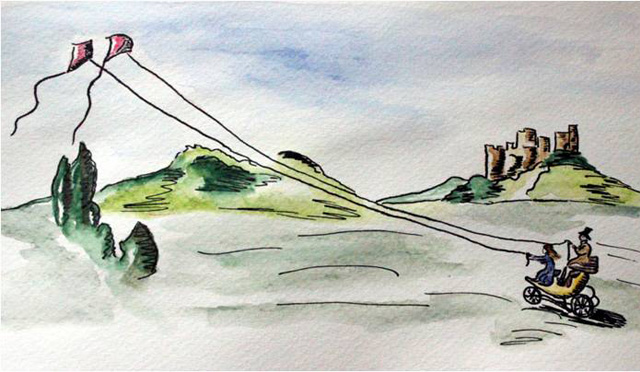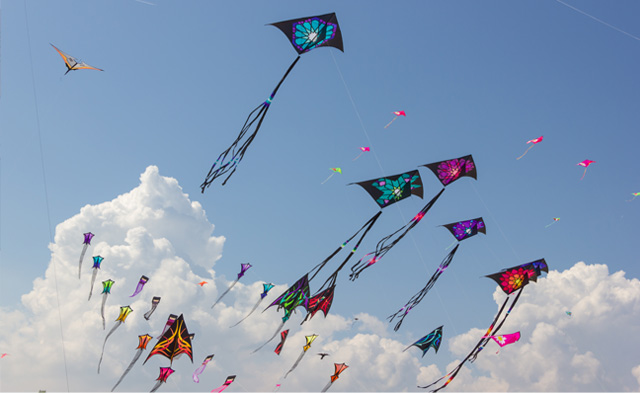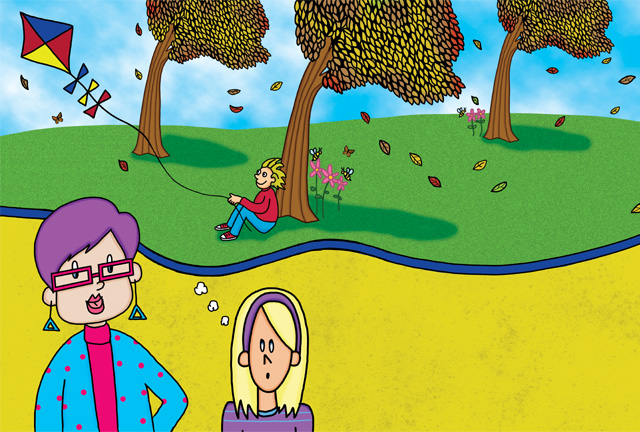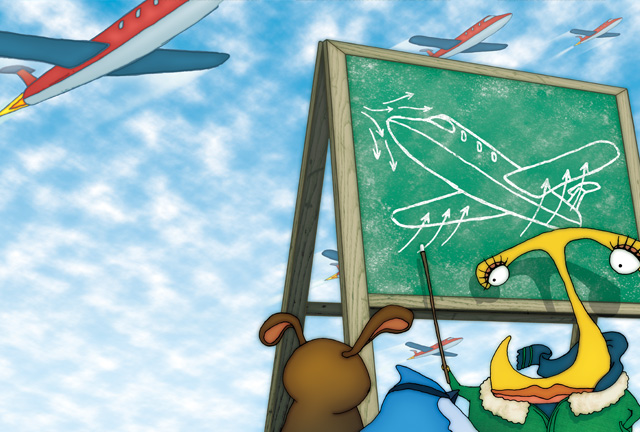“Let’s Go Fly a Kite” is one of the most popular songs in the movie Mary Poppins. Spring is a great time to do this! As the days get longer and warmer, it’s time to go outside, expel some energy and learn about the history of kites and the science behind kite flying.
Early Kite Adventures
The exact origin of kites is not known, but many sources point to China. Many believe the kite was invented by the fifth century BC Chinese philosophers, Mo Di and Lu Ban. In 549 AD paper kites were flown and being used in rescue missions. According to one source, approximately 300 years ago, a thief was said to use a large kite to carry himself to the top of Nagoya Castle in order to steal a golden statue from the roof. Unfortunately for him, he was captured and severely punished.

One of the strangest uses of a kite was developed by George Pocock, a U.K. school teacher. He created a carriage pulled by a pair of arch top kites. Since the toll was based on the number of horses pulling a carriage, this invention became quite a money saver!
After years of research and experimentation, the Wright brothers tested their flying machine as a kite before they flew it as the first manned airplane in 1903.

Fun Kite Facts
- More than 50 million kites are sold every year in the United States alone.
- The first kites are thought to have been constructed from leaves.
- Samual Franklin Cody was the first man to cross the English Channel towed by kites. Then he was the first man to build and fly a powered aircraft.
- The name of the kite was changed into “fengzheng” or “kite” in English. It produced sounds when it flew in the sky.
- Kite flying was banned in Japan in 1760 because too many people wanted to fly kites instead of work.
The Science of Kite Flying
The four forces of flight (lift, weight, drag, and thrust) affect kites in the same way they affect airplanes. Kites are shaped and angled so that the air moving over the top moves faster than the air moving over the bottom. Daniel Bernoulli discovered that air pressure decreases with faster moving air. Since the speed of the air above the kite is greater than the speed of air below, the pressure above is less pressure than the pressure below and the kite is pushed into the air.

Of course, wind is a big part of kite flying. But you can fly a kite even without wind! There are indoor kite races. This is a perfect research opportunity to see how this is possible.
April was chosen as National Kite Month because it is the month that perfectly symbolizes hope, potential, and joy.
Why not integrate kites as part of the April curriculum?

- Read the Fuddlebrook book A Big Gust of Wind and the Quirkles book Jazzy Jet to reinforce the science of kite flying.
- Integrate art and science as kids develop and decorate their own kites.
- Host a kite flying party and invite the parents.
- Research and present the history of kites to the rest of the class.
As you can see Mary Poppins has it right! Kite flying can be super fun and a great way to sneak in hands-on science! So….let’s go fly a kite!

